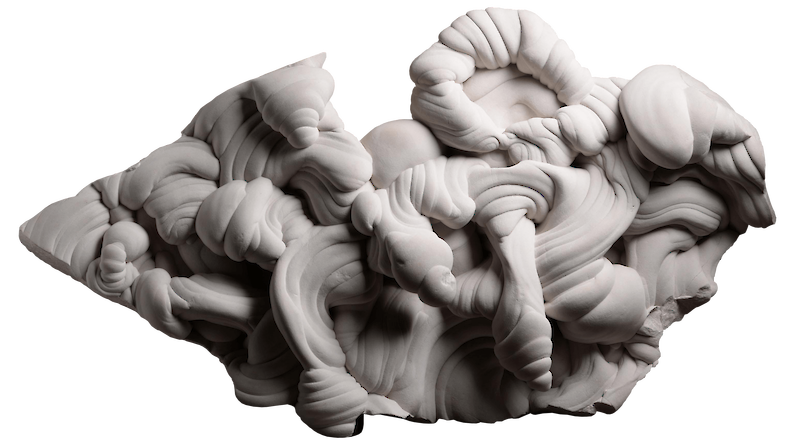


If scholar’s stones evoke the mysteries of China’s labyrinthine mountains and limestone caves, the extremely rare Gogotte stone formations evoke the mysteries of flesh. Contorted rippling, dangling pendules, rolls upon rolls of magnificent volume. Gogotte are unquestionably erotic. If these forms were created by human hands they would be seem like the pornography of a distant, unsettling future—dozens, sometimes hundreds of bodies entwined so tightly they've melted into union. Elbows, fingers, joints and sinew and rolling bellies, cheeks, and jowls, and phalluses. So many phalluses.
But Gogotte formations are natural, the result of a rare and ancient mineral process. Nearly every extant example of Gogotte stone was formed in one specific location near Fontainebleau France, 30 million years ago in the Oligocene Period. A basin of extremely fine silicate sand was injected with jets superheated water that was saturated with calcium carbonate, resulting in a gradual concretion of quartz crystals that mirrored in three dimensions the swirling eddies and jets of water, like Da Vinci’s whirlpool embodied. The result is a pure, silky smooth, white silica, that evokes the soft curves of classical sculpture. Like Michelangelo turned surrealist.
Gogotte formations are some of the most visually expressive things I've seen in years. I ran across them while researching Gongshi, Chinese scholar stones, and their visceral dynamism shook me out of a month-long aesthetic torpor. How had I not seen these startling objects before? Well, Gogotte exist in a dual limbo in contemporary culture. First, they are not, by definition, artwork or even artifacts. Naturally formed objects unmodified by human intent fall into a different classification system—that of natural history. And collecting natural objects, whether pinned butterflies or curiously shaped driftwood or exotic minerals, has a decidedly different set of social expectations. It is, at least in western culture, more humble than collecting fine art. If you can add to your collection while on a walk through the park, your collection probably won't crack wallets at a Sotheby’s auction.
And that’s where Gogotte formations flip the script. Large-scale gogotte are incredibly rare, with only 130 examples having been sold through Christies, 98 through barnebys and 69 through Sothebys. A handful of large Gogotte are given pride of place at 1stdibs, with elaborate promo videos panning lights over the variegated surfaces like an iPhone release spot.
...
Got questions, comments or corrections about "Catalyse" Gogotte? Join the conversation in our Discord, and if you enjoy content like this, consider becoming a member for exclusive essays, downloadables, and discounts in the Obelisk Store.

